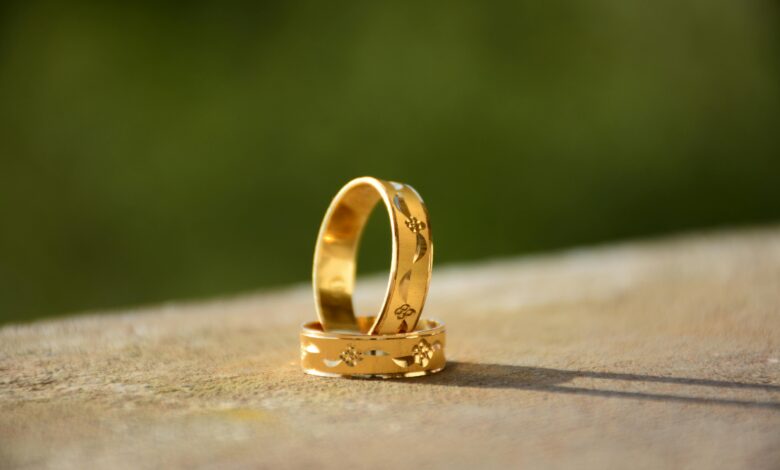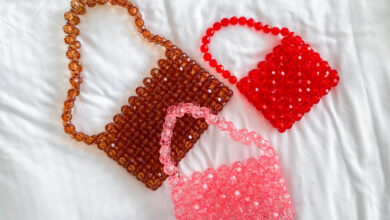Gold Rings: A Timeless Symbol of Elegance, Wealth, and Tradition

Gold rings have long been a symbol of beauty, status, and timeless elegance. Worn for centuries by kings, queens, and ordinary people alike, these rings represent not only material wealth but also personal and cultural significance. Whether used as a declaration of love in weddings, a family heirloom, or a fashion statement, gold rings continue to hold an important place in human history and contemporary life.
In this article, we’ll explore the enduring allure of gold rings, their cultural significance, the different types of gold used in rings, and what to consider when choosing one that best suits your style and needs.
1. The Historical and Cultural Significance of Gold Rings
Gold has been prized since ancient times for its rarity, beauty, and malleability, making it the metal of choice for crafting jewelry, especially rings. The Egyptians were among the first to use gold to make rings, viewing the circular shape as a representation of eternity. The Greeks and Romans later adopted this tradition, using gold rings as symbols of status and wealth. By the Middle Ages, gold rings became associated with religious and royal authority, often adorned with gemstones and engravings.
Perhaps the most iconic use of gold rings today is in the form of wedding bands. The tradition of exchanging gold wedding rings dates back thousands of years and remains one of the most significant rituals in marriage ceremonies around the world. The unbroken circle of a gold wedding ring symbolizes everlasting love, unity, and commitment. For many, the value of gold adds even more weight to the symbolic importance, making it a treasured part of a couple’s life together.
In many cultures, gold rings also signify prosperity and social standing. In places like India, gold is not just an ornament but an investment. Gold rings are often passed down through generations as family heirlooms, holding sentimental value alongside their monetary worth.
2. Types of Gold Used in Rings
While gold itself is a precious metal, not all gold rings are created equal. The type and purity of gold used in rings significantly influence their appearance, durability, and price. There are several options available for those looking to purchase a gold ring:
- Yellow Gold: This is the most traditional and classic type of gold, recognized for its rich, warm color. Pure gold (24 karats) is too soft for most jewelry, so yellow gold is often alloyed with metals like copper and silver to make it more durable. Common purities include 18K, 14K, and 10K, with 18K gold being more vibrant in color but softer than lower karat options.
- White Gold: White gold has become increasingly popular for modern rings, particularly for engagement and wedding bands. It is made by alloying yellow gold with white metals such as palladium, nickel, or silver, then coated with rhodium to enhance its brightness and durability. White gold offers a sleek, contemporary look, often preferred by those who favor a cooler-toned metal that resembles platinum but at a more affordable price.
- Rose Gold: This romantic and unique pink-hued gold is created by alloying yellow gold with copper. The copper content gives rose gold its characteristic blush tone, making it a popular choice for those looking for something different from traditional yellow or white gold. Its vintage charm and warm color make rose gold rings especially favored for engagement and fashion rings.
- Green Gold and Other Alloys: While less common, green gold, created by mixing yellow gold with silver, has a subtle greenish hue. Some jewelers also experiment with other alloys to create gold rings with distinctive colors and finishes, though yellow, white, and rose gold remain the most popular choices.
3. Designs and Styles of Gold Rings
Gold rings come in a vast array of designs, catering to different tastes and occasions. Whether it’s a sleek, minimalist band or an intricately detailed piece set with gemstones, gold rings offer endless versatility.
- Classic Bands: Simple gold bands are a timeless choice, especially for wedding rings. Their unadorned, smooth design allows the natural beauty of gold to shine through. These rings are often favored for their durability and simplicity, making them ideal for everyday wear.
- Gemstone Rings: Gold serves as a perfect setting for a variety of precious and semi-precious stones. Whether it’s diamonds, rubies, sapphires, or emeralds, gold rings can be adorned with gemstones to add color, brilliance, and symbolic meaning. Gemstone rings are often used for engagement rings, birthstone jewelry, or statement pieces.
- Vintage and Antique Rings: Many people are drawn to the intricate craftsmanship and history of vintage and antique gold rings. These pieces often feature filigree work, engraving, or unique settings that make them stand out. Heirloom gold rings passed down through generations often carry stories and traditions that add sentimental value beyond the gold itself.
- Modern and Contemporary Designs: Jewelers today experiment with bold and creative designs, blending traditional craftsmanship with modern trends. Geometric shapes, mixed metals, and textured finishes are just some examples of contemporary gold ring designs that cater to those with a taste for the avant-garde.
4. Factors to Consider When Buying a Gold Ring
When purchasing a gold ring, there are several key factors to consider to ensure you choose the right one for your needs and preferences:
- Purity: The purity of gold is measured in karats. While 24K gold is the purest, it’s also the softest and most prone to scratching. For daily wear, many opt for 14K or 18K gold rings, which offer a good balance between durability and purity.
- Style and Purpose: Consider the occasion and purpose of the ring. A simple gold band may be perfect for a wedding ring, while a more elaborate design might be better suited for fashion or special events. Personal style and comfort are also important factors when choosing a design.
- Gemstones and Setting: If you’re opting for a gold ring with gemstones, pay attention to the quality of the stones and the craftsmanship of the setting. Ensure that the stones are securely set and complement the gold’s color.
- Budget: Gold rings vary widely in price depending on the type of gold, the design, and any added gemstones. Establishing a budget beforehand will help narrow down your options and ensure you find a ring that fits within your financial means.
Conclusion
Gold rings have maintained their allure for centuries, symbolizing love, power, and elegance. Whether you’re drawn to the warmth of yellow gold, the sleekness of white gold, or the romantic hue of rose gold, there’s a gold ring to suit every taste and occasion. With countless designs, from classic bands to ornate gemstone pieces, gold rings offer not only beauty and status but also a connection to history and tradition that transcends time.



